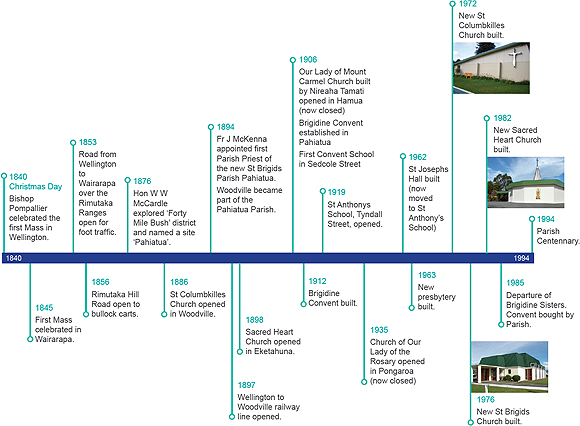Parish Mission Statement
We are the Church of Jesus Christ chosen and called to bring His Salvation to our communities.
Our Mission is to continue to bring the Gospel of Jesus Christ to our parish and world.
We are to be a prayerful loving welcoming and sharing community knowing and loving the teachings of Jesus.
We will be reverent and active in our participation of the liturgy.
 
Time Line

 
The Black Madonna of Czestochowa Feast Day August 26th

The Black Madonna was painted by St Luke the Evangelist and it was while painting the picture Mary told him of the life of Jesus which he later incorporated into his gospel. The next time we hear about the painting is in 326A.D. when St Helen found it and gave it to her son and had a shrine built for it in Constantinople. During a battle, the picture was placed on the walls of the city and the enemy army fled. Our Lady saved the city from destruction.
The picture was owned by many other people until 1382 when invading Tartars attacked a Prince Ladislaus’ fortress where the painting was located. A Tartar’s arrow lodged through the throat of the Madonna. The Prince transferred the painting to a church in Czestochowa, Poland.
In 1430 another incident occurred where a looter struck the painting with his sword twice but was struck down before he could strike again. He died in agony. The sword cuts and arrow wound are still visible on the painting.
In 1655 a small group of Polish defenders were able to drive off a much larger army of Swedish invaders from the sanctuary. The following year the Holy Virgin was acclaimed Queen of Poland by King Kasimir.
When the Russians were at Warsaw‚Äôs gates in 1920 thousands of people walked to Czestochowa to ask the Madonna for help. The Poles defeated the Russians at the battle along the Vistula River. Today the Polish children know the victory as ‚ÄėThe Miracle on the Wisla‚Äô. During WWII under German occupation, the faithful made pilgrimages to show defiance.
In the early 1980s, Lac Walesa, human rights activist, trade unionist and later politician, showed great devotion to Our Lady of Czestochowa. Pope John Paul II, a native of Poland, prayed before the Madonna during his historic visit in 1979 and returned in 1983 and 1991.
There have been many reports for centuries of the miraculous events such as spontaneous healings occuring to those who made pilgrimages to the portrait. It is known as the 'Black Madonna' because of the soot residue that discolours the painting. The soot is the result of centuries of votive candles burning in front of the painting. There are other stories giving reasons for the colour of the painting.
With the decline of communism in Poland, pilgrimages to the Black Madonna have increased dramatically.
This oil painting was given to the children at the Polish Camp just south of Pahiatua in 1944. At that time, 733 children, mostly orphans and half orphans, arrived in Pahiatua where a camp was established to give a temporary home for the children. The Wellington Polish community decided Pahiatua Catholics should have it as a thank you for hosting those refugees 66 years ago. Stephania and Joseph Zawada are pictured holding the oil painting.

